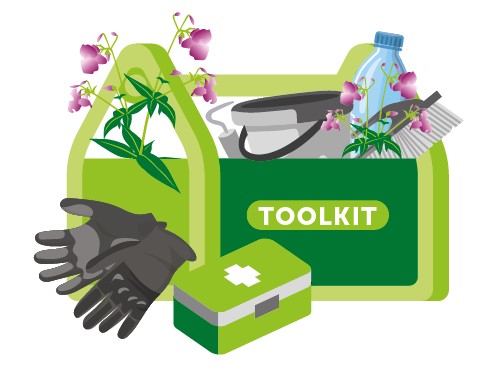

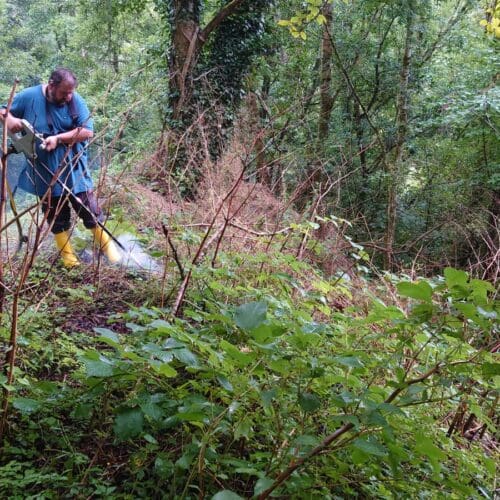
Always looking for alternatives to the recommended herbicide treatment, this August we trialled RootWave. This significant bit of kit sends electricity through the unwanted plants down into the roots or rhizomes with lots of popping, crackling and steam! Although possibly less effective than the herbicide at eradicating knotweed, the benefits are there’s no harm to nature or human health.
It’s been a fantastic team effort to get this trial up and running. Exmoor Non-Native Invasive Species (ENNIS) Project supplied the training for our team of contractors from the Wye & Usk Foundation (WUF), the North Wales Wildlife Trust loaned us the RootWave kit, Wales Resilient Ecological Network (WaREN) funded the safety boots, and we’re providing all the coordination.
So, we tested 4 sites around the lower Wye Valley, zapping JK stands. We assessed how well RootWave performed on the different ages of knotweed and on sites with different terrain, accessibility, surrounding vegetation growth. We’ll be writing up our findings in the coming weeks.
For 2023, we moved our ASC treatment programme to May to catch the cabbages in a vigorous condition, before any risk of drought (as last year), and before the bramble and bracken growth made access difficult. Here’s a summary of our activities and findings:
Brockweir Catchment: 12 sites (up by 7 from last year), 5 landowners (up by 2), approx. 340 plants present and treated/removed (up by 270).
We’re still finding more sites and making contacts with new landowners. We’re yet to hear back from one landowner to ascertain ASC extent on their land, but two local landowners have stepped in to start controlling 9 sites on/near their land and monitoring for new plants, which is a great result.
Cleddon Catchment: 25 sites (up by 5), 6 landowners (up by 1), 490 plants treated (up by 312).
The plant continues to spread in the upper catchment. All plants treated last year were absent. Some mature plants weren’t accessible last year due to dense vegetation but were treated this year. Many young seedlings were evident at many sites.
After many attempts, we’ve now been granted permission to treat the ASC on the land where it initially spread from. Having missed the May treatment we’re having to make a special visit this September.
Whitebrook catchment: 15 sites, 5 landowners, 1500 plants treated (up by 1446)
The number treated has rocketed as we’ve now gained access to 2 sites where the plants were prevalent. One landowner has stepped up to take control of 2 upstream sites and monitor for new plants.
We’re still tracking down the source of cabbage seed in this catchment, and plant to carry out another leaflet drop on the remaining tributary in the Whitebrook catchment this September to raise awareness.
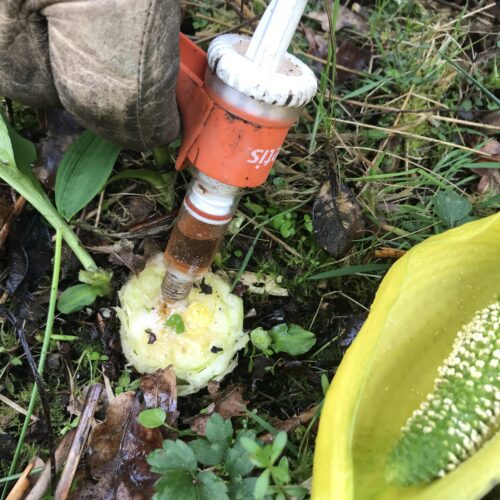

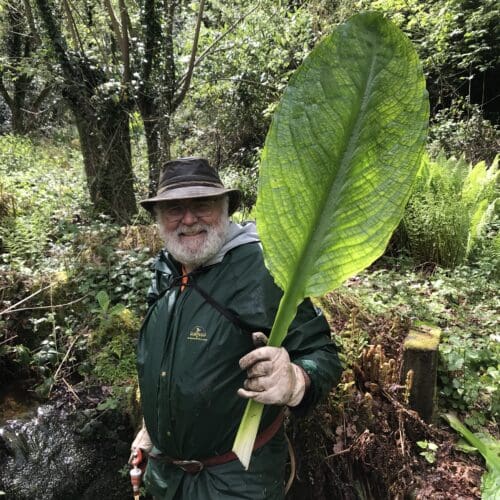

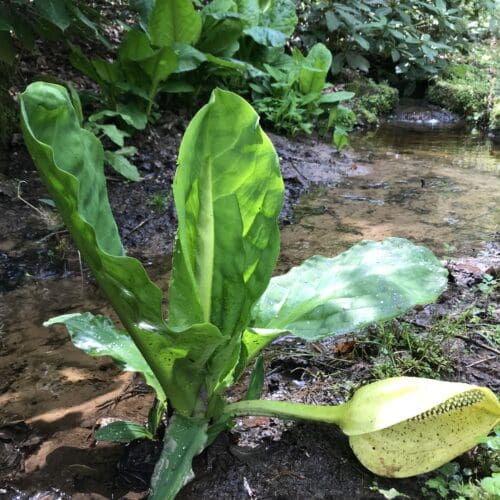

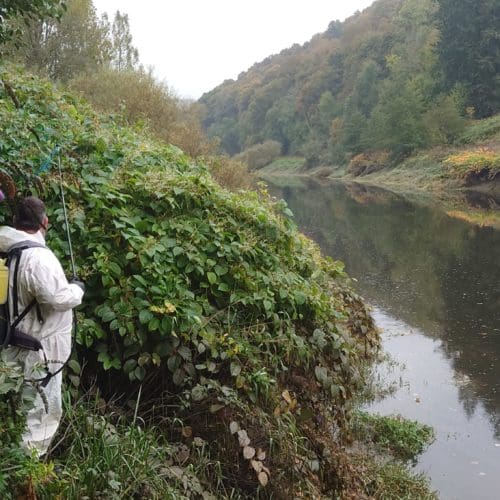

Though the year we’ve been collating information about Japanese knotweed (JK) sites and obtaining landowner support and written consent to treat it (eased hugely by our new online reporting forms). This laid the foundations for our two contractor teams to visit the 170+ JK sites between Lydbrook and Tintern, working around the blustery weather and high tides, to treat the JK and log site details.
Now in year 4 of our programme, we anticipated seeing the number of JK sites dipping. Unfortunately, it’s still on the rise. While we can’t attribute this solely to it increasingly being spread around – a heightened public awareness could be bringing in more reports than in the past – but given how easily it can be spread, we will continue to highlight the problem and best practice control – no cutting, no moving, no digging.
The positive news is the JK at many of the sites is in retreat or even absent, so far less herbicide is required now. Many plants are now stunted and low-growing or have taken a bonsai form, which unfortunately can prove hard to eradicate. In 2023, we plan to investigate alternative methods to herbicide treatment, so watch this space!
This work has been funded through Severn Trent’s Boost for Biodiversity fund and our Heritage Lottery Nature Networks Project.
Once again WISP teamed up with local contractor, Alan Martin (Nature Conservation Services), to spend a day treating American skunk cabbage (ASC) in 3 sub-catchments. Here’s a summary….
Brockweir catchment: 5 sites, 3 landowners, approx. 68 plants present and treated.
We revisited the two May sites where we’d live-headed flowers and treated using different methods. The best results were at the most upstream site where we’d cut the leaves just above ground level, removed the biomass, and injected herbicide straight into the fleshy stem. Just two medium sized plants remained (possibly missed first time). These were sprayed (20ml/litre dilution) using a cone to prevent spray drift and twenty seedlings were wiped using sponge tongs with 100% glyphosate. Three further sites were sprayed using the cone. The fifth site we trialled injecting 100% herbicide into the leaf stem. We’ll be able to continue to monitor all these sites thanks to Severn Trent’s Boost for Biodiversity fund.
Cleddon catchment: 20 sites, 5 landowners, estimate 300+ plants present, 178 treated.
We were alarmed to see the problem had grown significantly worse since 2020. Every known site, bar one, showed a significant increase in numbers. We treated around 180 plants but estimate there’s double that number that were inaccessible to us – we’ve not been able to obtain permission to treat the most upstream sites for the past 2 years and those plants are likely to still be releasing seed each spring. We will send all landowners an update and hope to be granted permission to access all sites next year.
Whitebrook catchment: 15 sites, 5 landowners, estimate 500+ plants present, 54 plants treated.
We’re still tracking down the source of cabbage seed in this catchment, so we conducted a leaflet drop around properties along one Whitebrook tributary. The second tributary will be visited next spring. We treated most of our known sites and one new, abundant site, but a change in ownership meant we were unable to access the most abundant ASC site this year. The number of ASC plants in this catchment will continue to grow, until the source(s) is found and contained. We will continue our awareness raising efforts here.
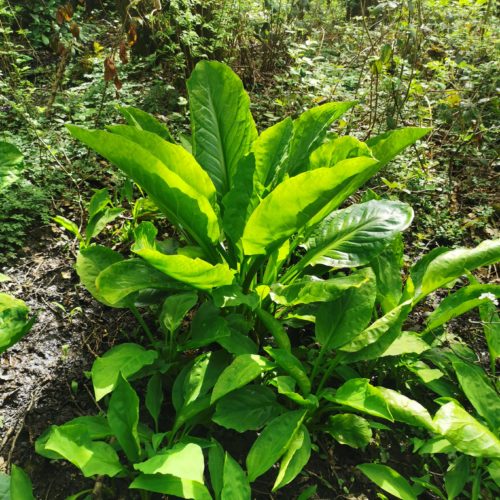

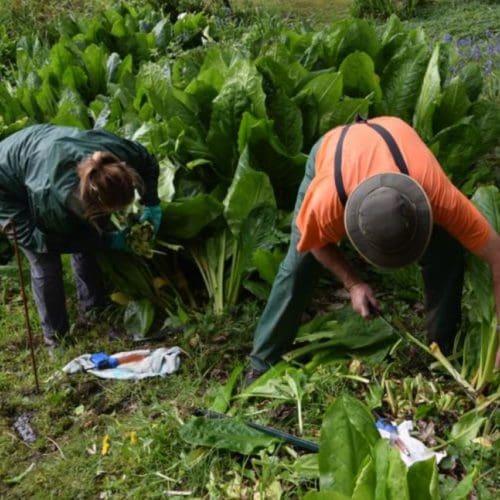

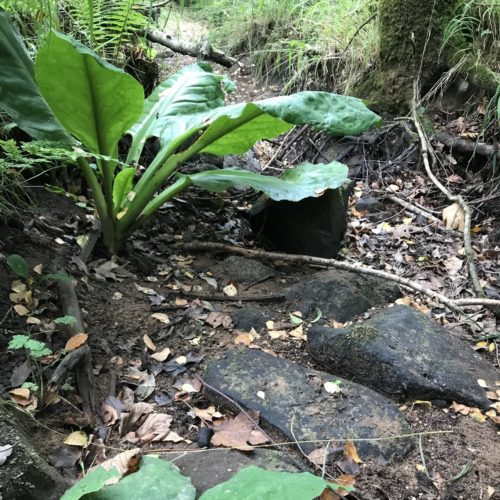

Four balsam control events were coordinated this summer on the hillslopes and tributaries above the River Wye between Bigsweir and Brockweir. The WISP team were joined by 17 volunteers, coming from as far afield as Bristol, Caldicot and Magor. Together, we’ve supported 4 landowners (and their neighbours by stopping this invasive plant from ‘jumping the fence’). We’ve returned sunlight to struggling tree seedlings and woodland flora, and prevented the spread of millions of balsam seeds. We will be revisiting these sites to check for any balsam regrowth and regeneration. Summary of progress:
A very big thank you to those volunteers who turned out to pull balsam with us, to the local landowners, to the Moravian Chapel and the Mackenzie Hall, and the Hewelsfield and Brockweir Community Shop for delicious cakes! These events are funded through Severn Trent’s Boost for Biodiversity Fund, and are part of a local catchment-scale approach to managing Himalayan balsam.
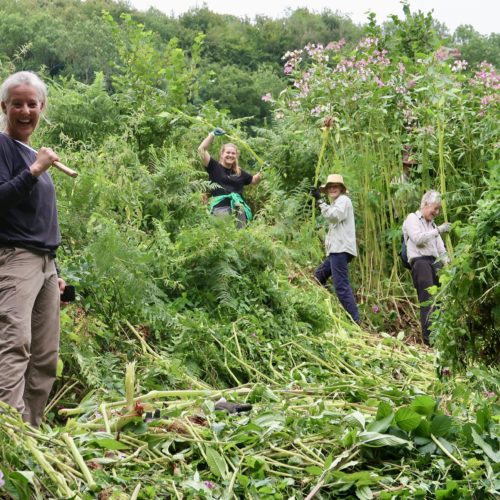

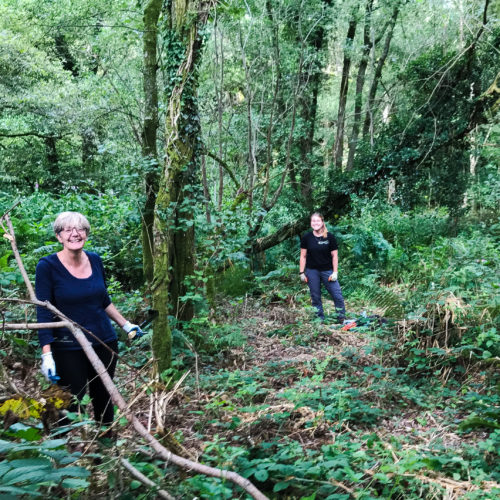

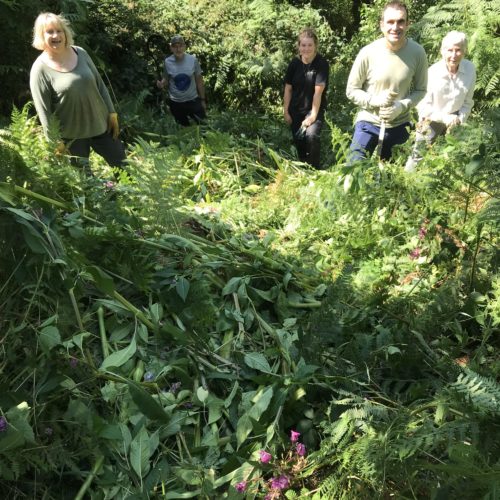

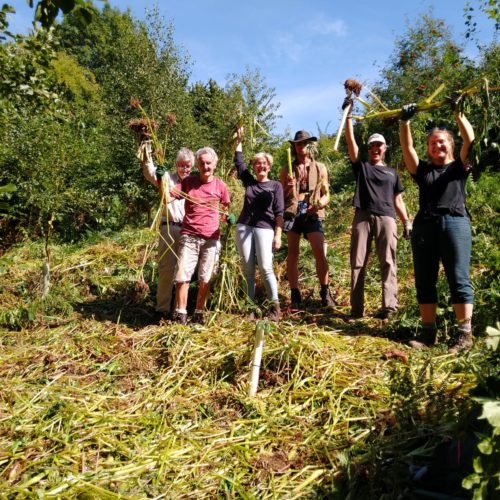

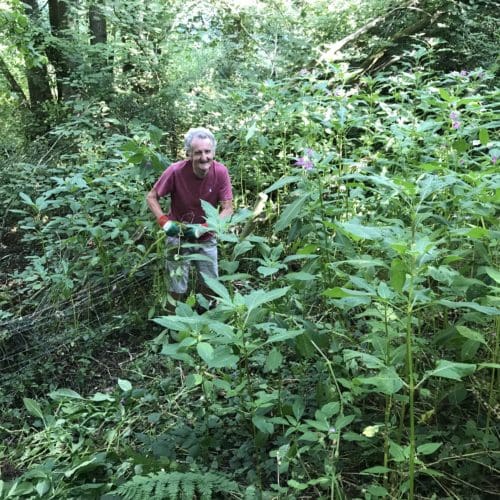

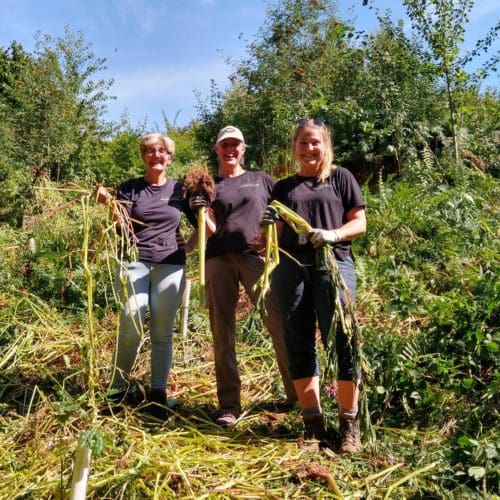

At one of our May training events, we brought Friends of the Lower Wye and the MonLife (MCC) team at Old Station Tintern together for the first time. Two further balsam sessions have been held through June and July, supported by the Wye Valley AONB Unit. This really couldn’t have been a better outcome and we hope this positive partnership will continue and flourish…unlike the balsam!
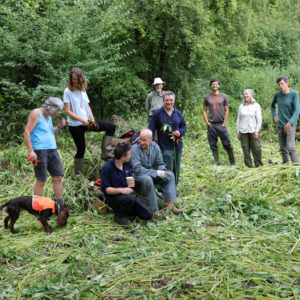

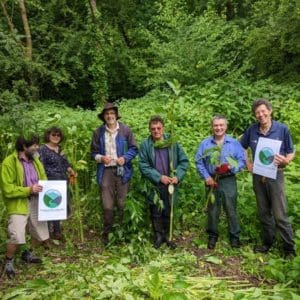

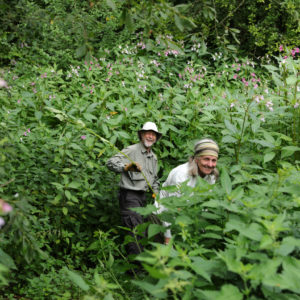

What a fantastic Sunday working with Operation Raleigh Alumni to clear invasive Himalayan balsam from a private wooded enclosure above The Hudnalls National Nature Reserve and Wye Valley Woodlands Special Area of Conservation. We pulled up around 3,500 plants, preventing the potential spread of up to 6 million balsam seeds through these precious woodlands, and had a lot of fun too! We’re hopeful this will be the first of many AONB Unit-Operation Raleigh Alumni collaborations.
A big thank you to the all the Alumni, the 3 landowners, Natural England and Brockweir Community Shop for their support. This event was funded through Severn Trent’s Boost for Biodiversity Fund.
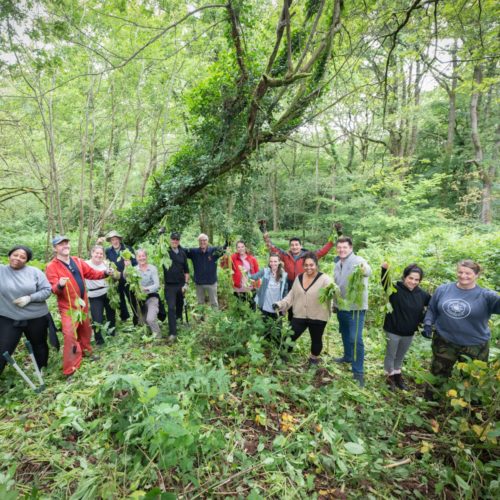

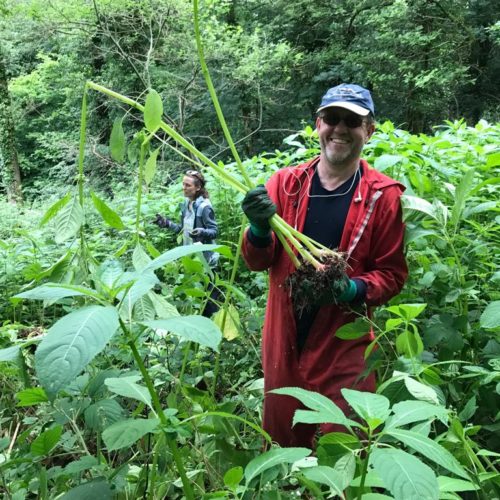

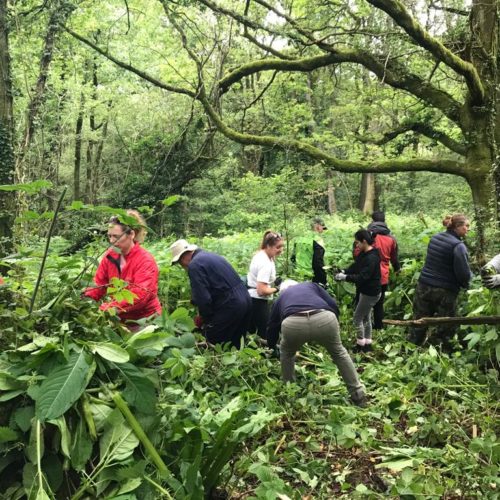

June saw the start of our awareness-raising campaign to inform people about the problem with Cherry laurel (Prunus laurocerasus) – still sold in garden centres and often the ‘go to’ plant for people who want to quickly fill a gap in a hedge or screen their homes. What’s not on the plant’s label is how easily it can spread from your garden into the wild and cause real problems for local flora and fauna, and potentially for your neighbour too! We are recommending that home/land owners give their Cherry laurel the chop to stop it spreading into the wild, and, if hedging or screening is needed, choose instead from the many non-invasive alternatives with wonderful wildlife benefits.
At the same time as this information went out across our social media channels, our contractors on the ground started the mammoth task of controlling the cherry laurel in Cleddon Shoots Woodland SSSI above Llandogo. Laurel has spread unchecked through the woodlands there, with a very dense growth within the steep, rocky gorge, necessitating technical roped access. The team have stem-bored and injected herbicide into the laurel, leaving it to die back and become standing deadwood.
This work complements the extensive Cherry laurel management that Natural Resources Wales are carrying out around the local forest estate.
Contact: Nickie Moore projects@wyevalleyaonb.org.uk for more information.
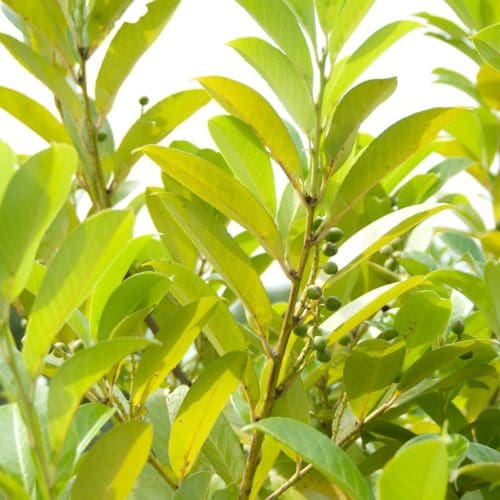

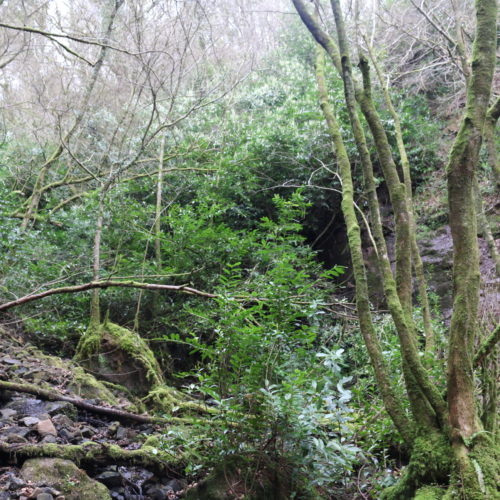

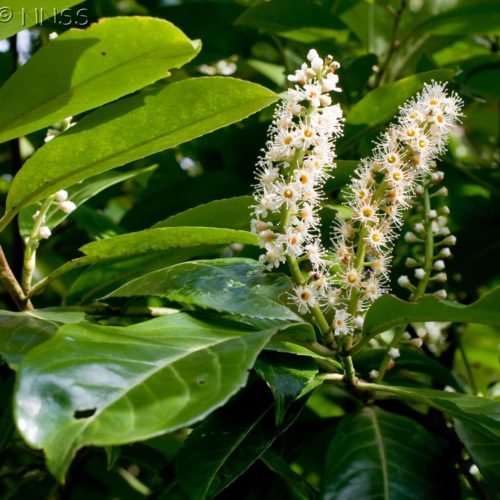

We were delighted to team up with WaREN and the Wye and Usk Foundation to run these training events for local residents and community groups. The days kick-started with three talks illustrating the work underway at a national, regional and local level including what we as individuals can do to stop the spread of Invasive Non-Native Species. After lunch (thank you to the Brockweir and Hewelsfield Community Shop for the beautiful cakes!), we met on site for a briefing and to get hands on and pull up the balsam. At Old Station Tintern we estimate we pulled up approx. 3,000 balsam plants, and at Llandogo, which was a more awkward site with lots of bramble, we pulled around 2,000. This means we’ve reduced the potential seed-bank from those plants by a minimum of 4 million seeds! (each plant produces between 800 and 2,000 seeds). Jess from WaREN gave a briefing about biosecurity and everyone took away a handy biosecurity kit at the end of the days.
It was great to have documentary-maker Emma Drabble with us, capturing both the action through the days and the attendees thoughts and perspectives.
Many thanks to all the those who turned up to listen and take part. Chatting with the groups, we’re confident the day will lead to more community-led balsam bashing within the Wye Valley AONB and further afield; the Friends of the Lower Wye (FoLW) are keen to carry on the fight at Old Station Tintern, the Llandogo Balsam Bashers are keen to keep ‘bashing’, and one attendee from Pontypool plans to set up a volunteer group to control balsam in his local park. All are now armed with our practical Balsam Action Toolkit.
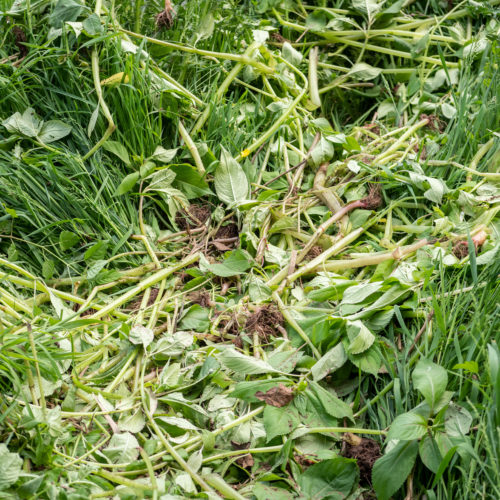

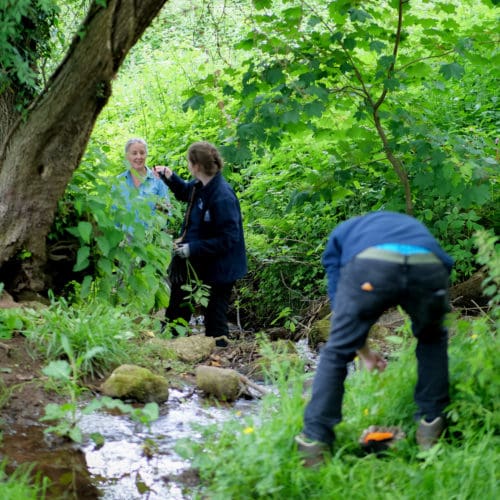

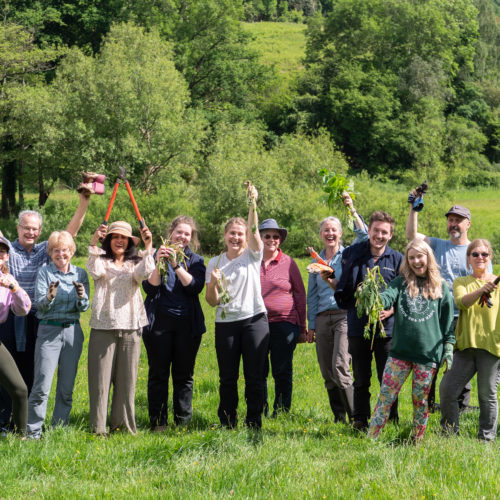

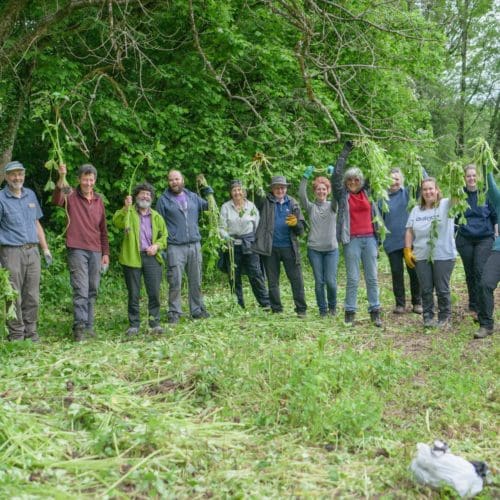

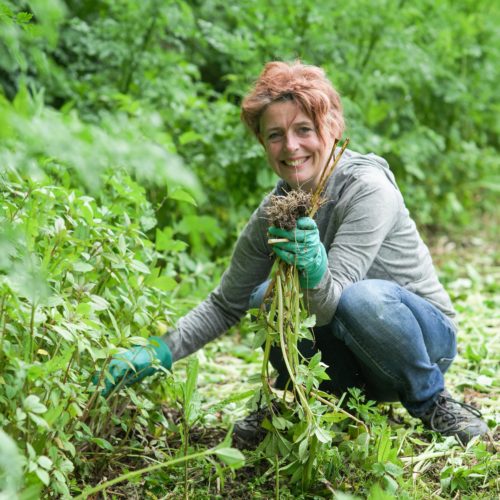

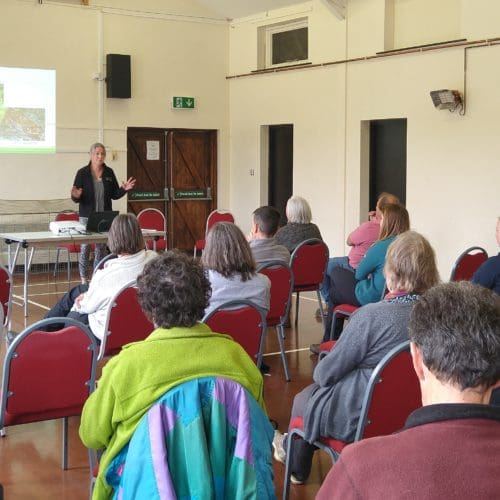

From 16 – 22 May we joined the GB Non-Native Species Secretariat and projects and initiatives from across GB to shine the spotlight on invasive species. We launched our Balsam Action Toolkit (Click here to download your copy) and we focussed upon raising public awareness and understanding, posting a range of articles across our social media channels. One appeal invited reports of Japanese knotweed, to increase our knowledge of the distribution and help to plan this Autumn’s knotweed control schedule. We promoted community-led balsam pulling days and held our own successful ‘Balsam Training Day’ in Tintern Village Hall and Old Station Tintern (see above).
A successful day filming and carrying out American skunk cabbage trials at two sites in the Brockweir valley with documentary-maker Emma Drabble and INNS contractor Alan Martin from Nature Conservation Services (NCS).
Photos courtesy of Emma Drabble and Wye Valley AONB team.
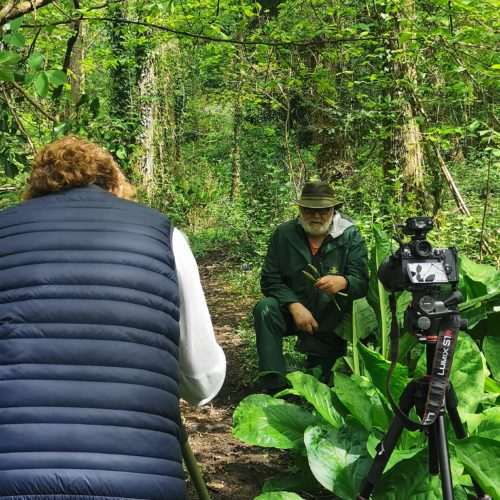

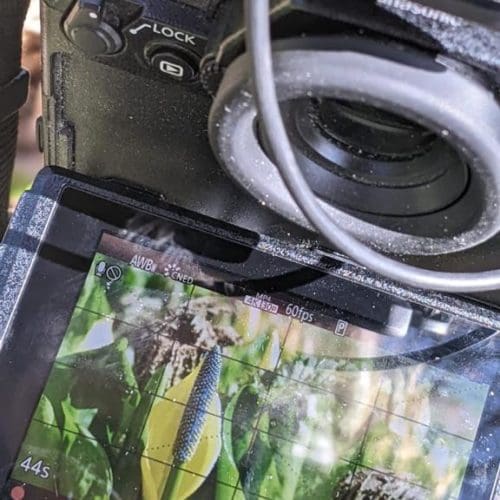

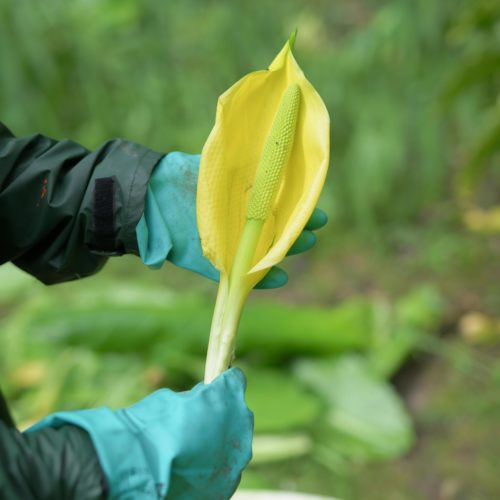

It was a beautiful sunny Saturday for the Archenfield Community Environment Day and the AONB Team had such a productive day at our WISP stand. We heard from many who were dismayed about the spread of Himalayan balsam around the local catchment, and we grasped the opportunity to gauge opinion about our newly developing Balsam Action Toolkit. Feedback was incredibly positive and enthusiastic for this new resource, which we’re designing specifically to help grass-roots groups to get active in tackling this pest plant.
We’re aiming to launch the toolkit this April, so watch this space!
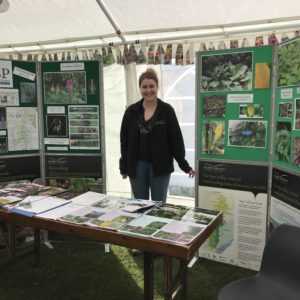

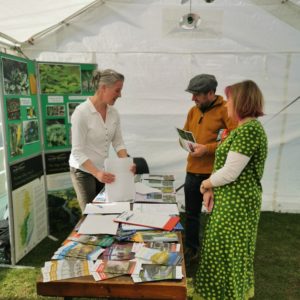

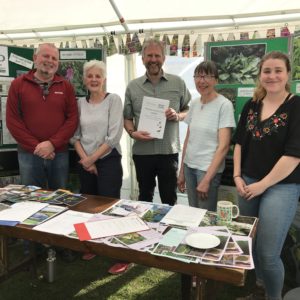

Our Lower Wye Project Officer, Nickie Moore, presented ‘Tackling INNS – the what, why, when and how’ at this public evening event. Click here for proceedings on YouTube and Nickie’s presentation is at 26mins.
Our aims were to join local communities together at Brockweir to bring Himalayan balsam under better control on the main River Wye in Brockweir, to stop it encroaching further into adjacent woodlands and species-rich meadows. We also wanted to raise awareness and demonstrate how easily balsam can be managed. Plus community INNS mapping and ground-truthing records.
We met on four dates through August, with two balsam pulling sessions each day. The ‘WISP HQ’ for the four days was the Moravian Chapel School Room near the riverbank in Brockweir. INNS information, toilets, wash hand facilities and refreshments were available through the day here, plus maps for the community mapping exercise and landowner/resident consent (access and INNS control) forms.
Photos courtesy of SARA and Wye Valley AONB team.
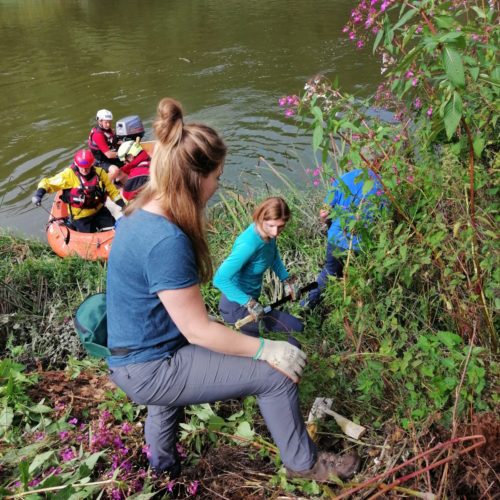

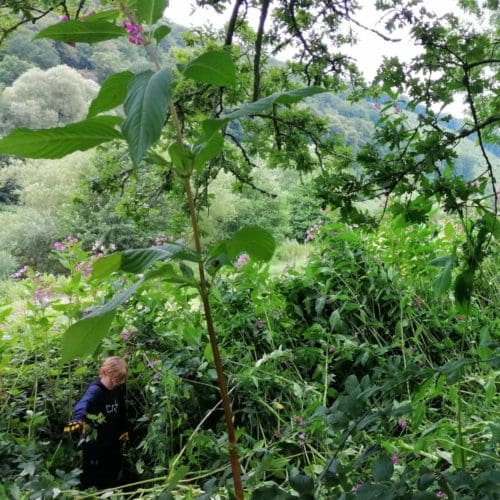

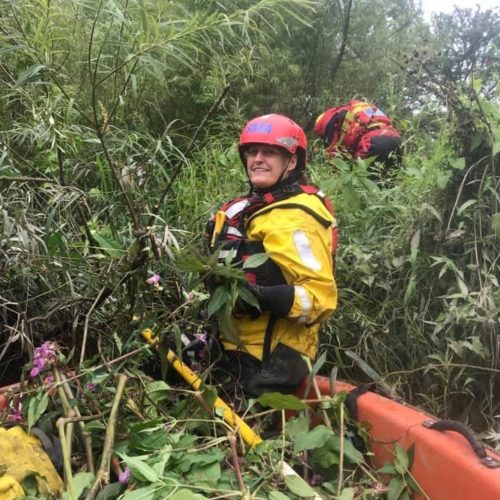

Here are some facts and figures from the events:
Time & area covered
- 4 days of community balsam bashing
- 5ha of river bank was cleared of balsam alongside the Offa’s Dyke National Trail.
- 6ha of semi-natural wildflower meadows and semi-improved pasture balsam-controlled by hand pulling and machinery.
Volunteer-power and new connections
33 volunteers took part in Himalayan balsam pulling over 4 days in Brockweir, including:
- 6 volunteers from SARA’s amphibious team over 2 days.
- 8 volunteers made sandwiches at Brockweir & Hewelsfield Community shop.
- 2 volunteer from the Moravian Chapel gave support by providing the ‘WISP HQ’, helping to contact local landowners and spreading the word.
- 3 volunteers put up posters and helped spread the word.
- 6 landowners signed agreements to allow access to their land.
1 new volunteer group (8+ people) has established in Llandogo. This group is now being supported to map the extent of balsam around their community and they will commence pulling up plants next summer in their local catchments.
Several members of the public stopped and chatted, thanked volunteers or dropped into the ‘WISP HQ’ to find out more information about species and local action.
Two new local INNS contractors made contact with advice and offers of support.
A huge THANK YOU to WISP supporters and funders! We were supported by SARA (Severn Area Recue Assoc.) and a big thank you to Richard and the team for helping out. We would also like to thank the committee from the Moravian Chapel, Sue Groves and Mary Harris who hosted us. And of course a thank you to Severn Trent who are helping to fund WISP (on the English side of the lower Wye Valley) through the Boost for Biodiversity fund.